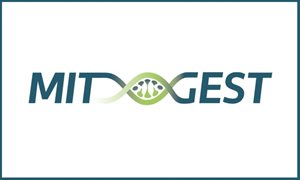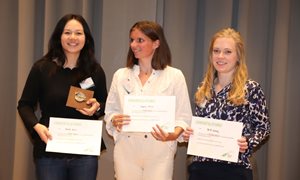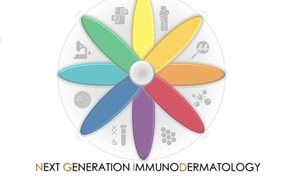
Diagnosing patients with rare diseases through a combination of artificial intelligence, smart computing power and genetics. To make this innovative project by Radboudumc, BioProdict and Vartion possible, the European Regional Development Fund (EFRO) and the province of Gelderland are supporting the project ‘Diagnostics-in-3D’ with more than half a million euros.
Many little ones make one big one. This also applies to rare hereditary diseases. One rare disease, as the word suggests, is not very common. But add up the roughly 7,000 known rare diseases and it soon amounts to about eight percent of the population. In recent decades, global efforts traced the causes of all these rare diseases. At the moment, this is possible for about half of the people with such a rare disease. So not for the other half. These patients do not know what exactly causes their illness.
Regional enterprises
Radboudumc, together with the companies Bio-Prodict and Vartion from the Nijmegen region, aims to change this with the project "Diagnostics-in-3D". This project is financially supported by the European Regional Development Fund (EFRO), more specifically by OP Oost, thereby contributing to a structural strengthening of the economy in the provinces of Gelderland and Overijssel. Martijn Huijnen, theme Metabolic Diseases, in the Radboudumc will lead the project. The starting point is the genetic code of humans. That code consists of approximately three billion letters. Many letters are the same, but a significant portion differs from person to person. Put one genome (the total of all genetic information of a human) next to the other and you will see many differences.
The importance of a good diagnosis
Regional cooperation - also aimed at strengthening the innovative, economic structure - is obvious. Huijnen: “The Nijmegen-based company Bio-Prodict has developed software that has automated the prediction of the effect of mutations on proteins. By using anonymous patient data and AI from Radboudumc, major steps can be taken in predicting the effect of mutations on the 3D structure of a protein, and thus on its function. For this, the representation of the 3D protein data, the deep learning architecture to be used and the computing power will be optimized. Malden-based Vartion is a specialist in the latter area. This collaboration of a knowledge institute and companies should ncrease the number of diagnoses for rare diseases. This is important, not only because a correct diagnosis is essential for the development of a treatment, but also because it may affect decisions about future pregnancies. ”
Which difference has an effect?
Martijn Huijnen: “The problem in the search for the cause of a rare hereditary disease is that it is not easy to indicate which difference in the genome exactly causes the disease. Suppose you find 1000 genetic differences in someone compared to the standard, which of those differences exactly makes you sick? Most differences have no effect whatsoever. As proteins do the work in our body, it is interesting to see whether a genetic difference also leads to important changes in the associated protein, making it less effective. That could be the cause of the rare disease. ”
Biological origami
A protein is a string of amino acids that has been carefully folded. That folding - organic origami you could say - is essential for the function of the protein. It provides the "hands and feet" with which a protein makes contact with other proteins and can do its job. Any genetic difference that causes a change in the shape of the protein could well be the cause of the rare disease. “In this way, the cause of rare diseases is increasingly - and successfully - searched for,” says Huijnen. "In our "Diagnostics-in-3D "project, Bio-Prodict, Vartion and Radboudumc now want to automate and accelerate this approach. In doing so, we mainly focus on the rare diseases that cause intellectual disabilities, a subject in which we have already built up a great deal of expertise in Nijmegen.”
Related news items

Hans Spelbrink is beneficiary of the MITGEST Doctoral Network which receives 2.6 million euros funding (PhD positions available)
27 September 2022EU has granted the new Doctoral Network “MITGEST” (Quality Control of the Mitochondrial Gene Expression System in Health and Disease), of which Radboudumc is one of the partners, with 2.6 million euros of funding under the Marie Sklodowska-Curie Actions.
go to page
Renee Salz wins prize for best presentation
10 May 2022 Renee Salz won the award for best oral presentation during the Rolduc genetics retreat, organized by the Dutch and Belgian Societies of Human Genetics in Brugge. Her presentation was titled "Variant effect prediction based on long read transcriptomes". go to page
Large NWA ORC grant awarded for national skin research: Next Generation ImmunoDermatology
23 March 2022Research for better treatment methods for chronic skin diseases.
go to page
Metakids-UMD grant for Purva Kulkarni
18 June 2020 The Metakids foundation has awarded 220.575 Euro to support the establishment of a multi-omics biomarker platform within the United for Metabolic Disease (UMD) consortium. go to page
MetaDome highly accessed
7 May 2020MetaDome was recently recognized as one of the most accessed articles of 2018-2019 in Human Mutation. The MetaDome was a project developed by Laurens van de Wiel, Christian Gilissen, and Gert Vriend.
go to page
Front cover Human Mutation
21 August 2019The MetaDome web server build to interpret genetic variants based on genetic tolerance and homologous protein domains is featured on the Cover of Human Mutation. MetaDome was developed by Laurens van de Wiel, Coos Baakman, Daan Gilissen, Joris Veltman, Gert Vriend and Christian Gilissen,
go to page